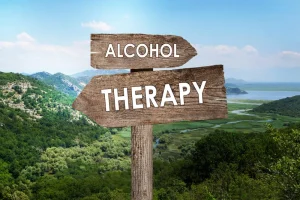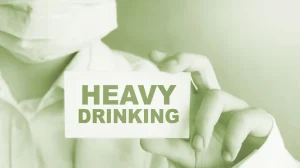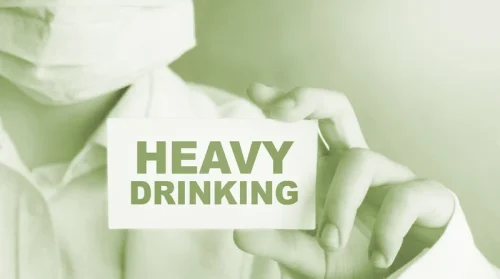Sober living houses are often used as a transitional step for people who have completed an inpatient treatment program and are not yet ready to return to everyday living. Living in a sober living house provides a structured, drug-free environment with house rules and guidelines to help residents maintain their sobriety and develop life skills to support their recovery. Sober living houses typically have house managers who oversee daily operations and enforce house rules.
If you or a loved one is seeking addiction treatment and a supportive living environment, exploring sober living homes might be the next step in your recovery journey. These homes not only provide a safe space but also foster accountability, peer support, and life skills development. Research shows that residents in SLHs often experience significant improvements in their alcohol and drug use, reduced arrests, better mental health, and increased employment opportunities. A Sober Living Home (SLH) is a specialized living environment designed for individuals committed to maintaining sobriety from alcohol and drugs. These residences offer an alcohol and drug-free atmosphere where individuals in recovery can support Living in a Sober House: Fundamental Rules one another as they work towards long-term sobriety and get back into society.
What Are The Rules Of Sober Living?
Whether you’re transitioning from an inpatient facility or looking for additional support post-rehab, a sober living home could be an excellent step towards sustaining your sobriety. The concept of sober living homes might seem simple, but the impact they can have on your recovery process is profound. They offer a balanced level of independence and support, enabling residents to strengthen their sobriety skills in a real-world setting before fully integrating back into society. Additionally, many homes are linked to professional counseling services and job placement programs, further assisting in the rehabilitation process.
People Also Ask
Sober living homes are structured environments designed to foster recovery and maintain sobriety. Unlike a typical residential home, these settings are tailored to meet the unique needs of individuals recovering from addiction. By understanding the structure and rules that govern these homes, you’re better equipped to select a living situation that aligns with your recovery journey.
How much do sober living homes cost?
- This ensures that residents have ongoing support as they work towards total independence.
- Some sober living homes may have lower rents, starting from around $500 per month, while luxury homes in affluent areas may have rents as high as $6,000 to $15,000 per month.
- Currently, the grant program is only available for tribal nations and non-profits, not individuals directly harmed by the fraud.
- This allows residents to function as normal adults while preventing them from falling back into old patterns.
- These can include job placement services, educational opportunities, or counseling, ensuring a smoother transition back to mainstream society.
Sober living homes don’t require accreditation, a state license or oversight from a behavioral health care provider. The lack of regulation has led to the creation of homes that lack access to support services or strict rules. A variety of other studies have also found that sober living homes appear to be an effective component of the recovery process.
How do I Choose the Right Sober Living Home?
This mutual support helps them feel less isolated and more empowered in their journey to sobriety. The supportive environment and continuous access to recovery resources significantly lower the risk of relapse. Regular drug testing and the community’s encouragement provide extra layers of accountability, further protecting your sobriety. Many sober living homes are connected with local therapy groups, counseling services, and job training programs. This access ensures you have the tools and support necessary to deal with life’s challenges without reverting to old habits. Sober living homes are more than just a place to stay; they’re communities committed to supporting individuals in their pursuit of a substance-free life.
- Given these struggles, men-only homes usually focus on early treatment, mental health support, relapse prevention, and aftercare programs.
- Understanding the concept and advantages of sober living homes is essential, whether you’re beginning your recovery journey or looking to strengthen it in a community setting.
- Many sober living homes are not government-funded and are self-supporting or operated by charities or addiction treatment centers.
- The focus is on building independence, with some homes offering job support and life skills training to help residents transition smoothly.
- The Grove Editorial Team is committed to educating, supporting, and empowering individuals and families on their journey toward a healthier, substance-free life.
However, establishing and operating a sober living home in Minnesota requires navigating a complex web of state and local regulations. Recovery residences are less expensive than living at a rehabilitation facility or detox center because fewer services are offered. But many sober homes require residents to attend support group meetings or participate in 12-step programs or outpatient treatment, which may be an additional cost for residents to consider. If you’ve just completed rehab and need more time to adjust, sober living homes provide a safe space to continue practicing recovery skills.
- Certain age brackets can experience specific challenges when recovering from addiction.
- Both sober living homes and halfway houses support people recovering from substance use disorders.
- If you’re struggling with triggers and feeling overwhelmed, then a drug and alcohol-free environment can be helpful.
- In other homes, counselors or case managers visit on a regular basis to provide in-home services.
- Halfway houses, on the other hand, typically have a time limit and require residents to either be attending a treatment program or have recently completed one.
Sober House vs Halfway House
Additionally, sober living homes often support residents in balancing work, recovery meetings, and house commitments. As residents end their stay, many sober living homes offer or guide them to reintegration resources. These can include job placement services, educational opportunities, or counseling, ensuring a smoother transition back to mainstream society. Residential treatment programs are much more structured and intensive than those in sober living houses.
Sober living in California has become an increasingly popular option for individuals in recovery from addiction. Halfway houses, on the other hand, are typically more structured and may be mandated as part of a court-ordered treatment program. Halfway houses are often reserved for those who have completed a residential treatment program and require additional support and supervision as they transition back into the community. Residents in halfway houses may be subject to more stringent rules, including mandatory curfews and drug testing.
Insurance Verification Form
An often-overlooked aspect of transitioning is the importance of building a strong support network. Sober living homes encourage connections with peers who share your commitment to recovery. In addition, attending local meetings, workshops, and staying engaged with counseling services can provide an added https://appsychology.com/living-in-a-sober-house/ layer of support that’s instrumental in maintaining sobriety. Addiction Resource is an educational platform for sharing and disseminating information about addiction and substance abuse recovery centers.
Embracing these benefits, you’ll find that sober living homes offer much more than just a place to stay. They furnish you with the tools, support, and structure needed to build a solid foundation for your recovery journey. These homes provide a substance-free environment that bridges the gap between an inpatient facility and the return to normal life. They are designed to offer a balanced blend of freedom and structure, helping residents reinforce their commitment to sobriety in a supportive community setting. Similarly, Medicare covers substance use treatment but does not include sober living costs as essential services. Medicaid coverage varies by state, so while some states may offer support for sober housing, it’s not guaranteed.
This supportive environment is comfortable and ideal for people trying to reintegrate into society. Sober living homes are an effective resource for individuals who have completed treatment and are ready to begin their lives in recovery. They provide a balance of supervision and independence that allows people to transition back to work, school and daily life. The daily schedule at sober living homes is heavily influenced by the residents’ current stage of recovery.
We’re here to provide guidance and support for anyone on their sober living journey. At Design for Recovery Sober Living, this journey is navigated with utmost care and structured support. Research conducted by the National Institute of Drug Abusw ( NIDA ) Indicates a staggering 40-60% replase rate for drug and alcohol addiction. A review published in Psychiatric Services evaluated research articles and reviews specific to recovery housing and found that consumers can benefit from increased access to sober living opportunities. Living with others on the same journey helps maintain a commitment to sobriety through mutual accountability. With little structure and monitoring, someone new in their recovery may want to a higher-level sober living home.
Is There a Difference Between Sober Living and Halfway Houses?
This is where a sober living house for extended stays can make a significant difference. The absence of drugs and alcohol ensures a safe environment, reducing the chance of relapse. The time an individual spends in a sober living environment can vary, ranging from a few months to over a year, depending on their unique recovery journey. Sober living homes work by offering a structured and supportive environment for individuals transitioning from intensive recovery programs back into regular life. With clear guidelines such as curfews and mandatory meetings, residents are held accountable and encouraged to maintain their focus on recovery.
That means providing expert clinical guidance in combination with hands-on life skills practice at home, where triggers are likely to arise. Weekly visits from peers in recovery provide mutual reinforcement at steady intervals. It’s hard to overstate the benefits of sober living, both for the recovering person and their family. Sobriety promotes physical health–deeper sleep, a commitment to nutritious eating, and regular exercise–but the mental health benefits deserve equal attention.



























